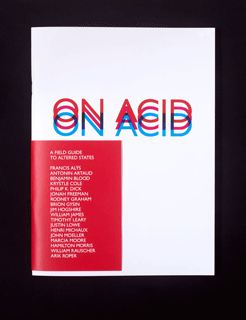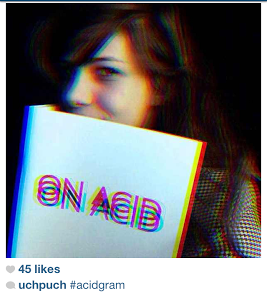
[excerpted from an interview with Hamilton Morris - full transcript available in the forthcoming Acid Age print journal]
AA: Some of your articles cover quasi-legal drugs produced by underground labs. What do you know about Dave Llewellyn and mephedrone?
HM: Llewellyn’s Alchemy Labz website was a well-designed scam. He broke every rule about how you’re supposed to sell designer drugs including the cardinal rule, you must de-emphasize the possibility of human consumption. Mephedrone was packaged as plant food, JWH-018 as bonsai growth enhancer, various alkyl nitrites as head cleaner and so forth. The Llewellyn crew poached their designer drug menu from various online chemistry and pharmacology forums. They even put a methylphenidate analog called ethylphenidate on the list after I wrote about its potential as a novel stimulant. Llewellyn sent me a moldy bag of supposed ethylphenidate that was nothing but wet flower. Then the Daily Mail published his warning against naphyrone, which was a red-herring and part of an elaborate meta-scam to draw attention away from all of the supposed new chemicals he was selling.
AA: I saw that. I didn’t know the background of the story but I smelled something fishy right away. It was clear he was trying to scare everyone about a drug in order to present his own products as the safe alternative.
HM: The fact is that no one knows what “NRG-1” is – any batch you get could be anything. In Spring 2010, because of the mephedrone scare, the British media was hungry for stories about novel designer drugs. So, and this is the nerdiest thing I’ve ever done, I contacted a journalist and told him that I had invented a drug that was a combination of cubane and mephedrone called “Hypercube.” But then I got uncomfortable when they believed me and called me on the phone to cover the story.
AA: What brought about the mephedrone phenomenon, with chemists reconfiguring the recipe to stay ahead of the law?
HM: All these designer drugs and quasi-legal highs are more prevalent in Europe precisely because the laws are different. In the US thousands of substances are in a grey area and the DEA can selectively prosecute using the Federal Analog Act. In order to circumvent these laws vendors throw completely novel structures onto the market with no regard for their customers.
AA: If the US has the Federal Analog Act, how does this affect someone like Alexander Shulgin, who keeps producing endless variants on MDMA?
HM: Well Shulgin only explores novel compounds, and each new molecular entity is a complete unknown regardless of its structural similarity to a lead compound like MDMA or DMT. Shulgin does not research psychedelics but rather antidepressants, should one of his putative antidepressants possess a psychedelic effect he characterizes it, discontinues research, and moves on. Additionally the DEA know if they arrested him how bad it would make them look, imprisoning this kindly old scientist, it would cause an outrage. Lastly, Shulgin has never directly profited off his drugs, which is key.
["Hamilton's Pharmacopeia" appears monthly in VICE magazine]



No comments:
Post a Comment